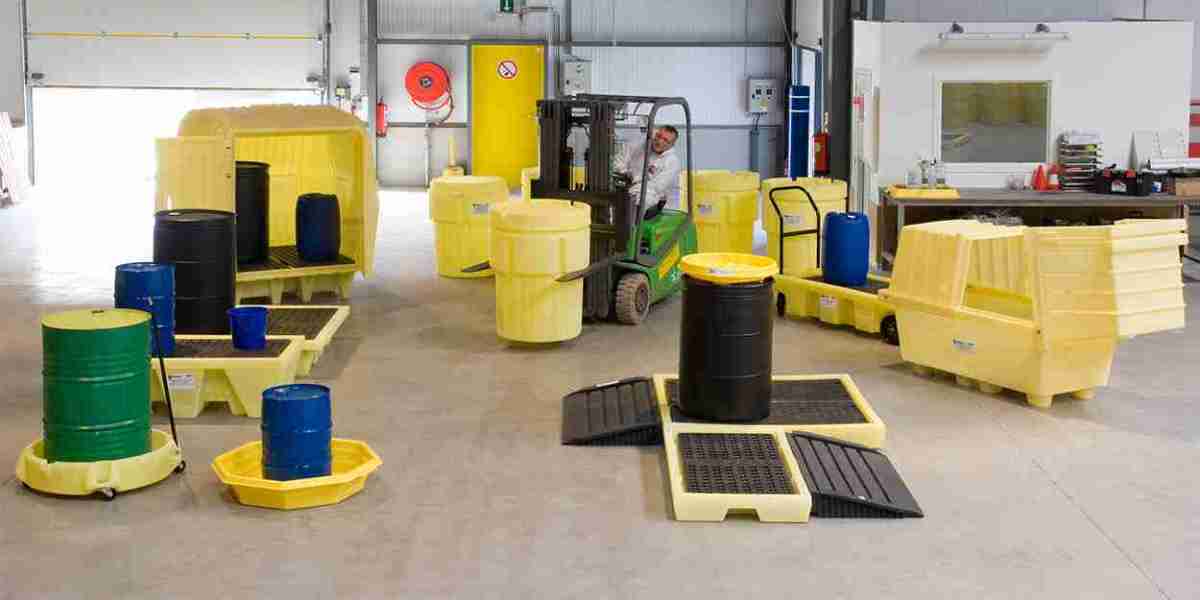The railcar spill containment market is a vital segment within the broader transportation safety and environmental protection industry. As the global movement of hazardous materials increases, so does the need for reliable, compliant, and efficient containment systems to prevent environmental disasters. To fully understand where this market is heading, it’s crucial to look at its dynamics the forces that shape supply, demand, competition, regulation, and innovation.
In this article, we explore the key components driving, restraining, and influencing the railcar spill containment market and highlight the opportunities and challenges businesses must navigate.
What Is Railcar Spill Containment?
Before we dive into the market’s dynamics, let’s briefly define the concept.
Railcar spill containment refers to systems and equipment designed to capture and contain leaks, drips, or full spills from railcars particularly those carrying hazardous or toxic materials such as crude oil, chemicals, and fuels. These systems can include track pans, spill berms, secondary containment liners, and absorbent barriers installed at loading/unloading sites or along transport routes. They are critical for complying with environmental regulations and reducing the risk of soil, water, and air contamination.
Key Drivers Shaping the Market
Several strong factors are pushing the market forward:
Environmental Regulations
Governments across North America, Europe, and parts of Asia are tightening environmental protection laws. Regulations like the U.S. EPA’s Spill Prevention, Control, and Countermeasure (SPCC) rule mandate companies to have robust spill containment measures in place. Non-compliance can lead to hefty fines, legal action, and reputational damage. As a result, companies are proactively investing in containment systems to stay compliant.
Increasing Transport of Hazardous Materials
The surge in demand for petrochemicals, industrial chemicals, and fuels has led to a steady increase in railcar traffic. Rail remains one of the most cost-effective and efficient modes for bulk transport, especially over long distances. This increases the need for reliable spill containment to manage the heightened risks of accidental releases.
Technological Innovation
Advancements in materials, such as chemical-resistant polymers and high-durability composites, have improved the performance and lifespan of containment systems. Meanwhile, the integration of smart monitoring technologies, like IoT-enabled sensors and automated alert systems, is enhancing the detection and response time for potential spills.
Corporate Sustainability Goals
Many corporations are going beyond mere compliance to embrace sustainability. Spill containment solutions help companies achieve their environmental, social, and governance (ESG) goals by reducing ecological impact, improving community safety, and demonstrating responsible stewardship.
Restraints and Challenges
Despite these growth drivers, the railcar spill containment market faces notable headwinds:
High Implementation Costs
Initial investments in infrastructure — such as installing spill pans, retrofitting old terminals, or upgrading monitoring systems — can be costly. This can deter small-to-medium operators, particularly in emerging economies, where financial resources are limited.
Infrastructure Constraints
Older rail systems, especially in regions with aging transportation networks, may not easily support the addition of modern spill containment solutions without significant retrofitting. This creates logistical and technical challenges for rollout.
Lack of Standardization
Global inconsistency in spill containment standards can complicate operations for multinational companies. While some regions have rigorous rules, others have more lenient or poorly enforced regulations, leading to patchy adoption across markets.
Competitive Landscape
The railcar spill containment market features a mix of established players and emerging innovators. Companies like SpillContainment.com, UltraTech International, New Pig, and SafeRack are well-known for offering a range of solutions — from modular track pans to full-scale spill response systems. Competition is intensifying as firms differentiate through innovation, customization, and value-added services like remote monitoring, installation support, and maintenance contracts.
Additionally, partnerships and collaborations are becoming more common. For example, containment system manufacturers may team up with railcar operators, chemical companies, or logistics providers to deliver integrated safety solutions tailored to specific customer needs.
Regional Insights
North America remains the largest market, driven by strict U.S. EPA regulations, a vast rail network, and high-volume hazardous material transport.
Europe is focused on sustainable transport, with strong pressure from the EU’s Green Deal and related environmental directives.
Asia-Pacific shows fast growth, especially in China and India, where industrial expansion and infrastructure modernization are fueling demand.
Emerging markets in Latin America and Africa are gradually adopting containment measures, although infrastructure and regulatory challenges slow uptake.
Future Outlook
Looking ahead, the railcar spill containment market is forecast to grow steadily over the next decade, with analysts predicting a compound annual growth rate (CAGR) of 5–6% through 2033. Major trends that will influence future dynamics include:
Smart Containment Solutions: Integration of IoT, AI-driven analytics, and real-time monitoring will enhance system performance and reduce human error.
Eco-friendly Materials: Growing emphasis on sustainability will drive the development of recyclable or biodegradable containment materials.
Global Standardization Efforts: Efforts to harmonize international safety standards could unlock new opportunities in cross-border logistics.
Final Thoughts
The dynamics of the railcar spill containment market are shaped by a complex mix of regulatory, technological, competitive, and regional factors. While challenges such as cost and infrastructure limitations exist, the strong momentum from environmental demands, innovation, and global trade ensures that this market will remain critical for the foreseeable future.
For businesses operating in or entering this space, staying ahead means not just meeting regulations but anticipating future demands, investing in innovation, and adopting a sustainability-first mindset.




